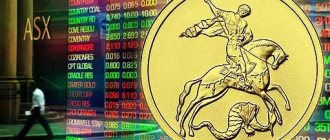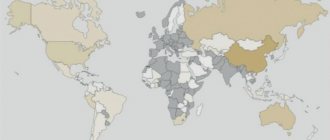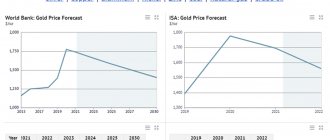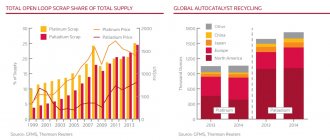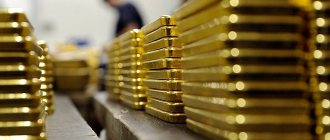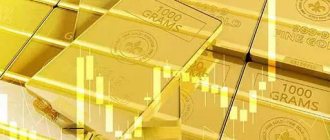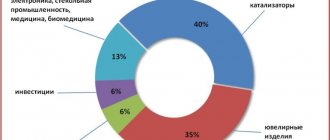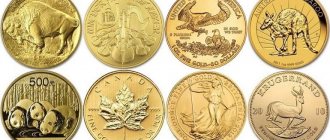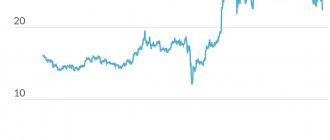On March 20, 2021, the day of the Vernal Equinox occurred and, coincidentally, the Novruz holiday for many Muslim peoples. We have already mentioned that a time window of +/-10 days from the days of the spring and autumn equinoxes is the ideal time for the completion of old and the beginning of new trends / processes - both in politics, economics, markets, and in private life.
And just last weekend, a large-scale wave of protests against Covid restrictions and lockdowns swept through a number of capitals of leading European countries - which is typical, with the leading Western media in deathly silence. Apparently, the protest wave will grow and spread, as people are very tired of lockdowns. And huge segments of the service economy were simply destroyed. This is a recipe for socio-political instability.
Meanwhile, yields on long US Treasury securities continued to rise, which led to the expected (and predicted by us in the previous review) correction in stock markets.
However, it was symptomatic that gold stopped “reacting” to rising yields on 10- and 30-year American bonds. Despite the continued rise in yields, gold not only stabilized (unlike the stock market, by the way), but even began to grow.
We predicted this situation, pointing out that the price of gold reached the “bottom” of the correction on March 8, 2021 at $1.676 dollars per ounce, and we do NOT expect to see lower gold prices.
This is confirmed not only by trend lines and technical indicators of oversold conditions, as well as analysis of temporary cyclical patterns, but also by the general emotional background (sentiments), which are deeply negative in the gold market. 8 out of 10 financial analysts expect the fall to continue - and this tells us that the fall will not continue. However, we do not expect a sharp increase yet, due to the fact that the US Federal Reserve has not yet decided to target the yields of American long-term government securities. But we believe it is a matter of time.
In the meantime, the Fed has “only” announced the continuation of asset purchases of $120 billion per month. This is enough liquidity to prevent any dramatic decline in stock markets. We believe that in the next 2 months there will be more of a “sideways consolidation” in the markets before further takeoff.
What about the price of gold?
Currently, the price of gold is testing local resistance in the area of $1.750-1.760 dollars per ounce, which has been a support zone in recent months, and where the low occurred on November 30, 2020.
We believe that this area will be broken in the coming week, and the price will further test the resistance in the area of $1,800 dollars per ounce, where the resistance trend line is now located.
After breaking through the $1,800 level, the price will already accelerate upward, officially entering a new uptrend.
Analysis of the gold market in March-April 2021
Gold hit its lows twice during March. Against the backdrop of rising US Treasury yields, the yellow precious metal has become unprofitable for investors. However, after the approval of the financial assistance package for the US economy, the gold market began to recover. In April, the dynamics of gold prices will be inversely related to bond yields and the exchange rate of the American currency.
In the first week of March, gold continued to lose its appeal to investors. The price of the precious metal fell by 2.4% to $1,683 per troy ounce. Against the backdrop of the protracted approval process for the US economic stimulus program, investors turned their attention to the profitability of their investment portfolio. Interest-free gold has ceased to be in demand, unlike 10-year US bonds. In addition, pressure on gold was exerted by the US dollar, which rose in price to a three-month high.
In the second week, the yellow precious metal regained lost ground, rising in price by 2.9% to $1,732 per troy ounce. The strengthening occurred after the US Senate approved the assistance program in the amount of 1.9 trillion. dollars. Rising inflation expectations and the sale of bonds increased the demand for gold, which again acquired the status of a protective asset.
The rise in gold prices continued until mid-March, reaching a maximum of $1,745 per ounce. Until March 26, the price of gold fluctuated in a narrow range of 1725-1740 dollars per ounce in a negative direction. Although Treasury yields fell during this period, demand for gold remained subdued. Investors preferred to increase the profitability of their investment portfolio.
For the second time in the past month, gold fell in the last days of March. The price fell by 2.7% to $1,685 per troy ounce. The gold market was pressured by positive investor sentiment regarding the vaccination process and prospects for economic recovery, which was confirmed by strong US labor market data. In addition, the US dollar rose to a four-month high as Treasury yields rose to a 14-month high.
Since April 1, gold has shown positive dynamics, rising in price by 0.94%. The price increase occurs against the background of expectations of J. Biden's investment program for infrastructure projects. However, rising bond yields and a strengthening dollar, the pace of vaccinations and economic recovery will restrain the rise in price of the yellow precious metal.
In early April, gold again reached $1,745 per ounce. If during this month the precious metal overcomes and consolidates above the resistance level of $1,750, then the gold market will have the prospect of further growth to the level of $1,755 per troy ounce.
You can find out the cost and donate gold by calling. All operations with valuable metals are carried out in our office near the Arbatskaya metro station.
Back to news list
What about the ruble exchange rate?
The behavior of the ruble in the spring of 2021 will mainly be dictated by several factors: rising yields on long-term American government bonds, geopolitics, as well as probable panic in adjacent markets.
In particular, on Saturday, March 20, Turkish President Recep Tayyip Erdogan removed the head of the Bank of Turkey (for the second time in the last 4 months), who pursued a tight monetary policy and raised the key rate of the Turkish Central Bank from 10% to 19%. This has already caused a panic sale of the Turkish lira, whose exchange rate against the dollar at the opening of the Hong Kong stock exchange fell by almost 20% - to 8.5 liras per dollar. Such panic in one local developing market can spread to adjacent markets, one of which is Russia and the ruble.
Yields on long US bonds continue to rise, reducing the potential attractiveness of emerging markets and causing capital outflows. Finally, specific geopolitical risks are associated with Russia, due to the new American administration, which is negatively disposed towards Russia (and personally towards V.V. Putin), threatening to introduce more and more new sanctions.
In view of all these inputs, we believe that the ruble will test the level of 76 rubles per dollar in the coming weeks, despite the increase in the rate of the Central Bank of the Russian Federation.
Investment gold market in Russia
We have repeatedly talked about the fact that the investment gold market in Russia consists exclusively of the market for gold investment coins - due to the fact that precious metal bars are illiquid due to the presence of a number on the bar (special control: the state knows who is the last owner of the bar under given number), as well as the need to pay VAT (in the amount of 20%) upon receipt of the bullion in hand from the bank’s cash desk.
Slightly increased volumes of shipments of Central Bank coins to commercial banks made it possible to reduce premiums to the exchange price of the metal in the price of gold investment coins “St. George the Victorious” (face value 50 rubles), containing 1/4 troy ounce of gold.
As a result, the price of gold George now varies among private dealers in the range from 36,500 to 38,000 rubles per coin (depending on volume). At the same time, the selling price of the Central Bank of the Russian Federation for gold Georgies is currently 34,500 rubles per coin. However, in view of the prospects for a jump in both the price of gold and the dollar/ruble exchange rate, we believe that the price minimum has already been passed and the selling price will creep up, and with it the price of gold coins.
And taking into account the unpredictability of the policy of the Central Bank of the Russian Federation regarding the supply of coins to credit institutions, any new supply restriction may further spur an increase in the price of coins - due to an increase in the premium for shortages. In any case, we perceive the current coin quotes as a temporary sale that may end as abruptly as it began. Follow the news and quotes!
Forecasts and comments. Demand for gold is returning
Trading results 13.10
Moscow Exchange Index: 4243.92 points (-0.47%) RTS Index: 1855.11 points (-0.80%)
From leaders to outsiders
On Wednesday, the Russian stock market had to pay for the outpacing growth that was shown in previous weeks, when it was actively rising, despite the decline in key global exchanges. The Moscow Exchange index was losing more than 1% at the moment and looked weaker than the main American and European indices.
There were no significant negative factors. The correction in oil prices during the day was very moderate, and by the end of the session, losses in Brent futures amounted to a modest 0.3%.
According to the Moscow Exchange index, the previously established picture does not change. The local correction fits within the framework of a growing trend and does not yet give a signal of a trend reversal. From above, the area of 4300 points can be identified as the nearest reference point. Mainly, the recovery to record levels could be ensured by shares of the oil and gas sector. Yesterday they were just among the laggards, thereby removing the technical overheating.
Attitudes towards gold are changing
The day before there were signs of the beginning of a change in sentiment in the precious metals market. The reason is dollar inflation. Statistics for the United States were released on Wednesday: the consumer price index (CPI) accelerated to 5.4% y/y in September, while analysts expected the previous pace to remain at 5.3%. In monthly terms, growth reached 0.4% (0.3% was expected).
In its monetary policy, the Fed tends to focus specifically on core inflation, although it uses a slightly different indicator - PCE Price Core. Nevertheless, the acceleration in CPI growth in this case confirms the likelihood of a tightening of monetary conditions being announced as early as next month.
In the comments of economists and analysts of large investment houses, the opinion that inflationary pressure in developed countries is not short-term and temporary, but is becoming sustainable, is becoming increasingly mainstream.
Under these conditions, speculative demand for gold, traditionally perceived as a hedge against the acceleration of the consumer price index, is returning. On Wednesday, the price of a troy ounce rose to $1,790. While this is not yet a definite beginning of a sustainable rise, it already signals a change in the depressive dynamics of this fall. To form a more serious pattern indicating the prospects for continued medium-term growth, gold futures need to consolidate above the nearest target resistance $1830–1835. In this case, the next targets will move above $1900.
Please note that yesterday’s rise in precious metals was not even prevented by either rising expectations of an earlier rise in interest rates in the US, or the publication of the minutes of the previous Fed meeting. The regulator expects QE to be phased out from mid-November, by approximately $15 billion per month. According to market expectations based on CME FedWatch, the likelihood of two Fed rate hikes next year is already estimated at 51%.
In focus
• Growth of the third tier in the electric power industry. On Wednesday, a unique situation arose when the first 25 lines in the list of the highest-growing securities on the Russian market were occupied by low-liquid shares of small-capitalization electric power companies with a trading turnover of more than 1 million rubles. I have never seen such a single picture. Most of the securities are sales companies.
In most cases, no objective drivers for such strong growth in shares were found. Most likely, the rise in quotes is speculative in nature - the securities that have shot up are characterized by low liquidity, so individual trading participants can influence their dynamics.
In the near future, increased volatility in securities will continue, and growth may even continue. However, as speculative demand declines, there is a high chance that stocks will return to pre-rise levels as quickly as they took off.
• Polyus (+4.2%), Polymetal (+4.2%). Demand for shares in the sector has returned along with a rebound in gold prices. Precious metals quotes are the dominant factor in stock pricing, so when you buy the securities of the two largest public gold mining companies, you are primarily betting on the rise in the price of gold itself.
In the Polyus and Polymetal pair, we prefer shares of the second company, taking into account slightly more attractive multiples, as well as stronger oversold conditions accumulated in previous months.
• Segezha (+5.9%). The shares continue to grow steadily, which began after the news that AFK Sistema is selling part of the shares of Segezha to Bonum Capital for $150 million. In turn, Segezha will acquire from Bonum Capital for $515 million a 100% stake in the authorized capital of Inter Forest LLC Rus", which unites a number of forestry assets in the Krasnoyarsk Territory and the Irkutsk Region.
The timber industry group is perceived by investors primarily as a “growth story.” The effect of the deal in the long term is positive. Thanks to new assets, financial indicators are expected to increase, which should contribute to an increase in the share price. During local waves of decline, securities can be considered for addition to a long-term portfolio.
• Lukoil (-0.7%). The company's board of directors recommended paying 340 rubles. dividends. The amount coincided with our expectations, since it was initially assumed that Lukoil would pay all free cash flow to shareholders. Over a 12-month horizon, the dividend yield on oil company shares may be about 10%. There is still room for stocks to rise at current oil prices.
• NLMK (-2%). Operating results for the third quarter have been published. Steel production decreased by 15% QoQ, to 3.9 million tons (+1% YoY), due to an incident in the oxygen supply infrastructure at the Lipetsk steelmaking site in August and subsequent repair work. At the same time, sales decreased by only 4% QoQ, to 4.1 million tons (-7% YoY).
• MMK (-2.9%) also published its operating report for the third quarter. The results are neutral. The decrease in sales volumes is explained by the growth of export sales with long delivery times, that is, in the fourth quarter due to this, volumes should increase. Among the positive aspects, it should be noted that the weighted average selling price of products increased by 12% - this will partially smooth out the effect of the decline in sales. The company increased coking coal production in the third quarter, which is especially important in light of the strong rise in coking coal prices. The company's forecasts for the fourth quarter are not the most optimistic. At the same time, it is possible that domestic prices for steel products will look better than world prices due to a reduction in the discount observed now.
• Today, from the opening of trading, a small dividend gap in Samolet . Considering the amplitude of fluctuations of these securities, the price gap may go unnoticed.
• Detsky Mir will publish operating results for the third quarter of 2021 on Thursday.
• The International Energy Agency will today publish a monthly report on the situation on the oil market.
• From December 6, trading on the stock market will begin at 6:50 Moscow time, the Moscow Exchange reported. Currently they are held from 9:50 to 23:50 Moscow time. Now, in total, trading on the stock market will last 17 hours.
External background
The external background this morning is neutral . American indices rose slightly after the close of our main session on Wednesday. Asian markets today are trading in different directions and do not show uniform dynamics. Futures for the S&P 500 index are growing by 0.25%, Brent oil is up by 0.1% and is at $83.3.
Taking into account the results of previous evening trading, it can be assumed that if the current background is maintained, the opening of the Moscow Exchange index (IMOEX) will be close to Wednesday’s closing level.
Macrostatistics and expected events for today can be viewed in our calendars
Follow BCS Express materials on Telegram
START INVESTING
BCS World of Investments
